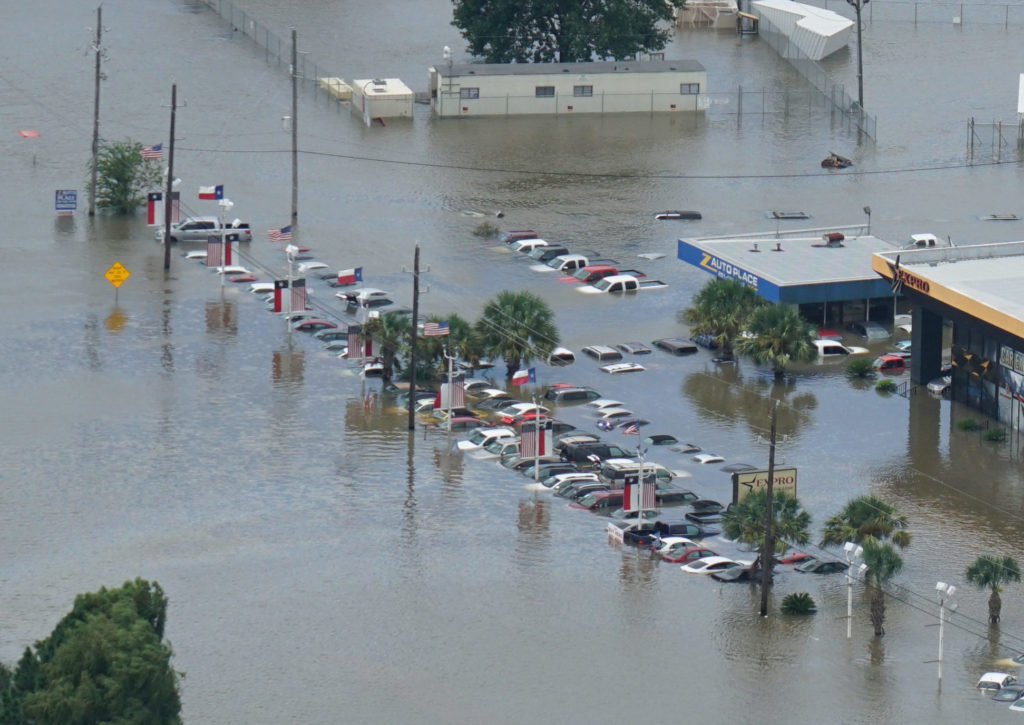
Guest column: Liberty Mutual tips for water damage appraisals
By onBusiness Practices | Education | Insurance | Repair Operations
Editor’s note: The National Hurricane Center warned Thursday that Hurricane Florence was likely to cause high winds, flooding and coastal storm surges in the Carolinas and threaten Virginia too.
That means vehicles could be damaged by fresh-, salt- and possibly even wastewater (not to mention the effects of up to 105 mph winds from what at about 11 a.m. Thursday was a Category 2 hurricane). It will be imperative that body shops and insurance adjusters understand how to properly assess — and potentially total — flood-damaged vehicles.
Liberty Mutual has graciously allowed us to reproduce (with edits that include redacting internal process expectations) an excerpt from its recent guidance to independent appraisers regarding evaluating vehicles following such a storm. While repair professionals will obviously need to rely on their own experience, the actual vehicle’s circumstances and the OEM procedures to develop estimates and repair plans, the document offers reminders that might help prevent something slipping through the cracks.
By Liberty Mutual
Partial Submersion Definition (Fresh Water)
Water Level: An important factor in the handling of flood losses is the level reached by the water during the flood. In general, a partial submersion occurs when water rises to a level not higher than the lower portion of the instrument panel.
Items usually serviced during this type of loss include upholstery, electrical components, and differential engine transmission components.
Water line marks should be measured and photographed when visible. Do not assume any areas may be free of damage. Check for water levels under the hood, in the passenger compartment and in the trunk area.
Never start the engine on a flood vehicle until the fluids have been checked and possibly changed.
Check for water in quarter extensions, spare tire well, air cleaner, fuse box, under floor mats, door storage pockets and center console storage.
Vehicles that have been closed and locked are subject to excessive condensation. This condensation can cause damage to parts that were not initially submerged, including electrical items and upholstery.
Total Submersion Definition (Fresh Water)
This occurs when the water level rises above the lower portion of the instrument panel. Repairing a totally submerged vehicle is not practical — these should be handled as total losses.
Salt Water and Waste Water Flooding
Water Level: If the water line is At/Below the rocker panel with no intrusion in to the passenger compartment: Follow the ‘Flood Water Damage Estimating Guidelines‘.
If the water line is At/Above the rocker panel with intrusion in to the passenger compartment: Due to the corrosive nature of saltwater, and contamination associated with waste water, it is generally not practical to repair a vehicle involved in these kinds of flooding.
Total Loss/Total Submersion Flood Water Damage Estimating Guidelines
These guidelines apply when assessing the total loss of flood losses (i.e. full submersion (fresh water), salt/waste water with water At/Above the rocker panel with intrusion into the passenger compartment.
Partial Loss – Flood Water Damage Estimating Guidelines
These guidelines apply when assessing the repairability of flood losses (i.e. partial submersion (fresh water), salt/waste water without intrusion in to passenger compartment, other:
Determine whether the vehicle was running when it was submerged.
lf operating, did the engine “hydro-lock” or make any unusual noise after going through the water?
If not at a repair facility, contact the vehicle owner and move to shop of choice within the market.
In order to determine the full extent of damage it may be necessary to authorize certain preliminary repairs, cleanup, and for diagnostics.
Ensure the following items are agreed upon with the repairer prior to proceeding:
- Scope of preliminary work.
- Timeframe.
- Cost.
- Ensure proper diagnostics have been performed and reviewed prior to replacement of any components.
Take note of electrical equipment that was submerged under water. Can the equipment be cleaned and dried? ls corrosion present?
Check for impact to the vehicle’s warranty when assessing flood damage. Many manufacturers have specific guidelines and recommendations regarding repairability.
Excessive mud may also damage components. Have the vehicle power washed if necessary.
For items not found in the database, attempt to secure pricing from vendor or shop.
- Examples: upholstery cleaning, repair or replace, de-odorizing, steam cleaning, repack bearings, lubrication of seat tracks and springs.
Other items to consider cleaning and checking: Starter, alternator, master cylinder, behind wheels, rear axle water level (if relevant).
It is desirable to steam clean the chassis if steam-cleaning facilities are available, otherwise flush with high-pressure clean water.
Floor mats, door panels, carpeting or upholstery having water damage should be removed from the car, thoroughly flushed with clean water and air dried. Jute padding should always be replaced when damaged by water.
For cleaning purposes, it is not necessary to disassemble the engine, transmission, or differential of a partially submerged vehicle. The fluids in each of these systems should be checked. If any evidence of contamination exists, the fluid should be drained and replaced. The fluid should be checked again and the process repeated until the contaminant has been completely removed. Operation of a vehicle with contaminated fluids may damage internal systems due to improper lubrication.
Damage to electrical components is common in flood losses. Electrical components should be removed and checked for water damage and replaced as needed.
Note location of electronic components. Many are under seats, in trunks, doors, etc.
Hydro-lock
This occurs when water enters the engine, usually through the air intake. The water enters the cylinders where the pistons attempt to compress it. Since you cannot compress a liquid, the engine seizes and considerable damage (cracked cylinder head or bent connecting rods) may be sustained to the engine. The key is whether the vehicle was running when the water got in the engine. If this occurs, the spark plugs should be taken out and the water removed from the engine. Change all fluids, steam clean and start the vehicle for a short period then drain all fluids again. After this, the vehicle should be started and checked for engine damage.
Liberty Mutual is a Top 10 auto insurer.
Images:
A view of Hurricane Florence from the International Space Station on Sept. 12, 2018. (Provided by NASA, International Space Station)
South Carolina National Guard soldiers load a Humvee ahead of Hurricane Florence. (Staff Sgt. Erica Knight/U.S. Army)
Vehicles are submerged following Hurricane Harvey. (Karl Spencer/iStock)


